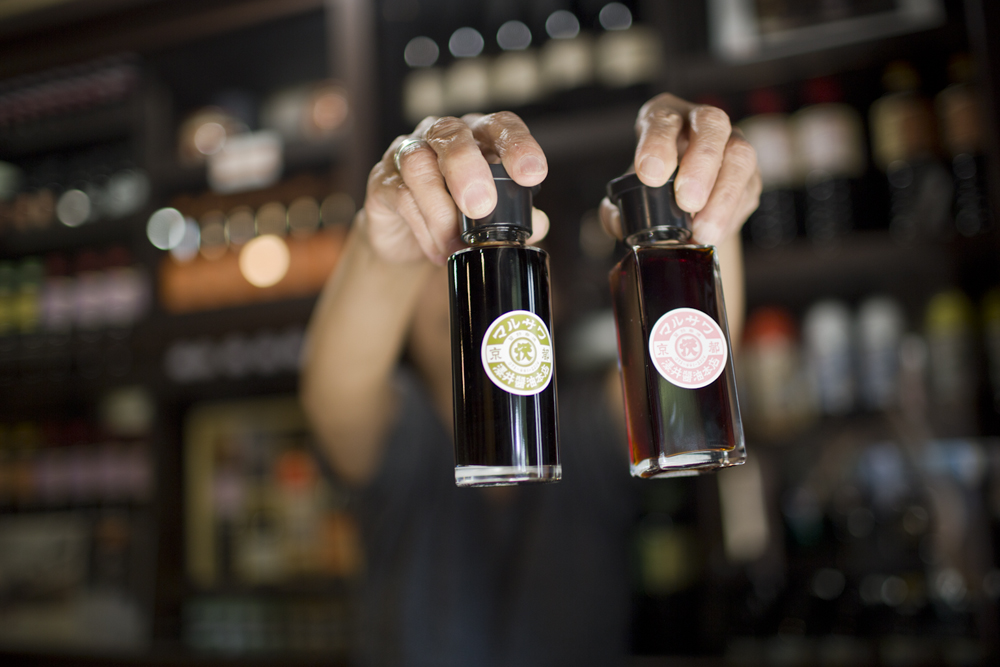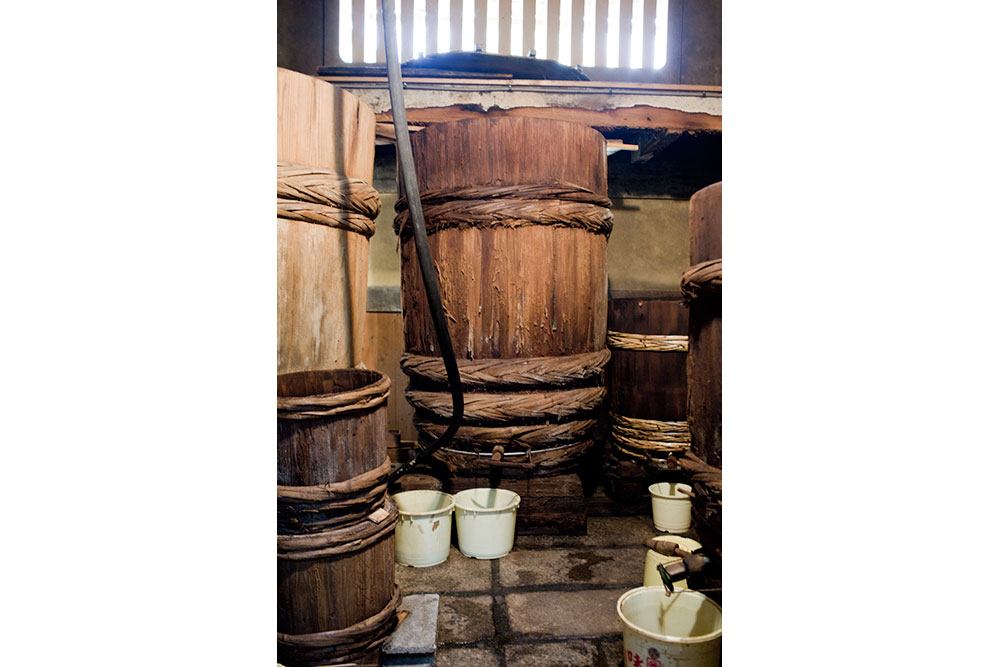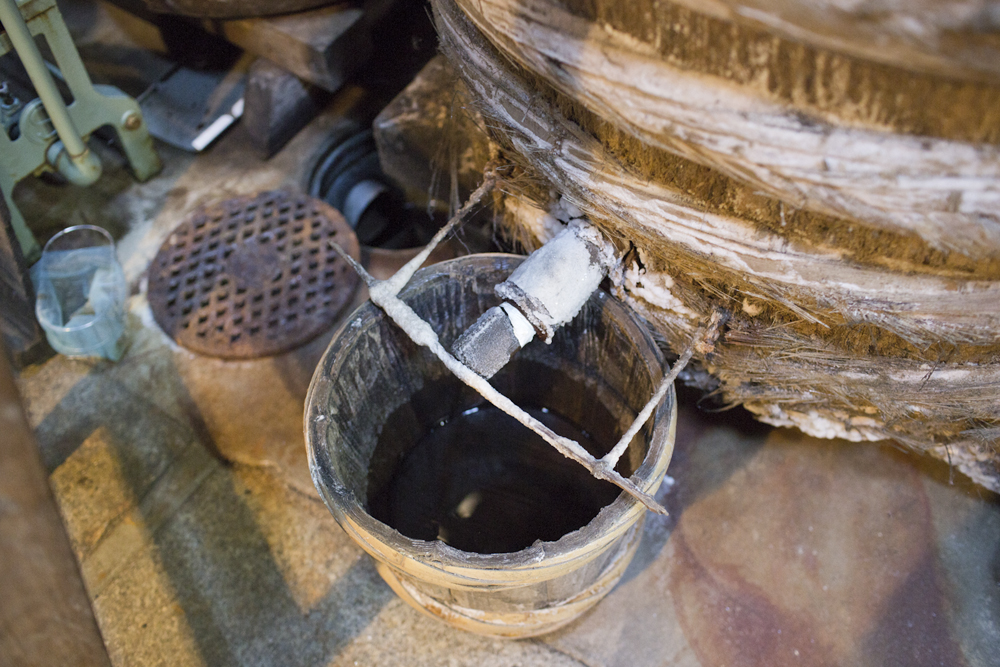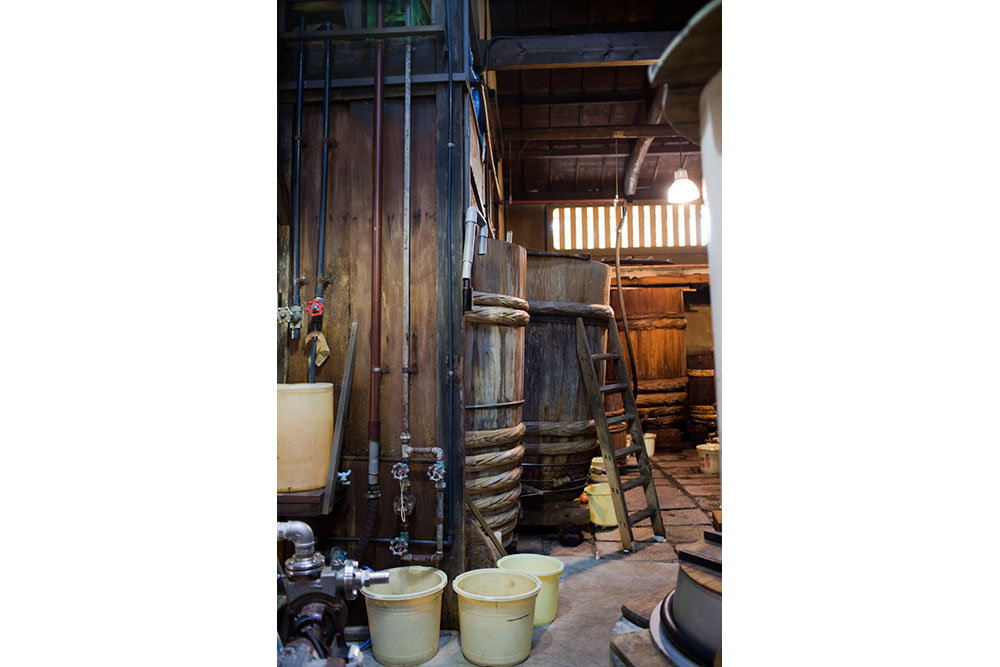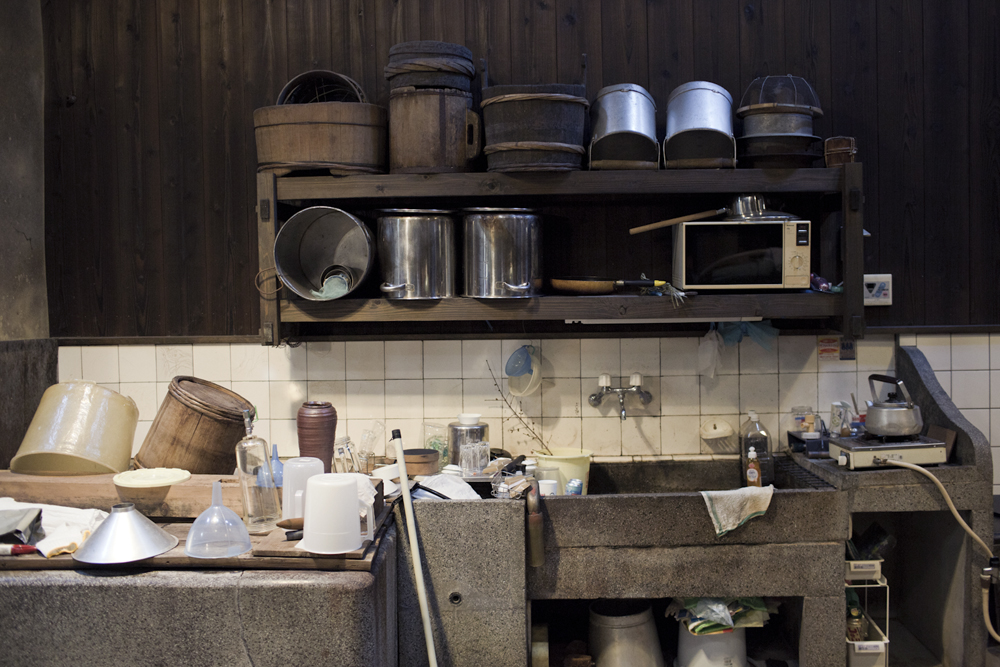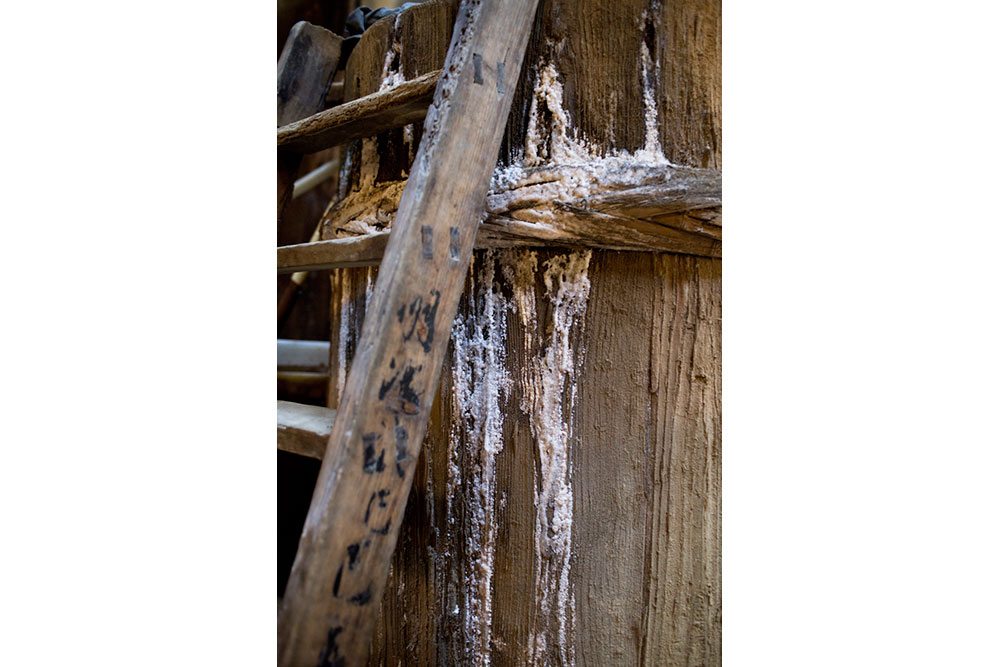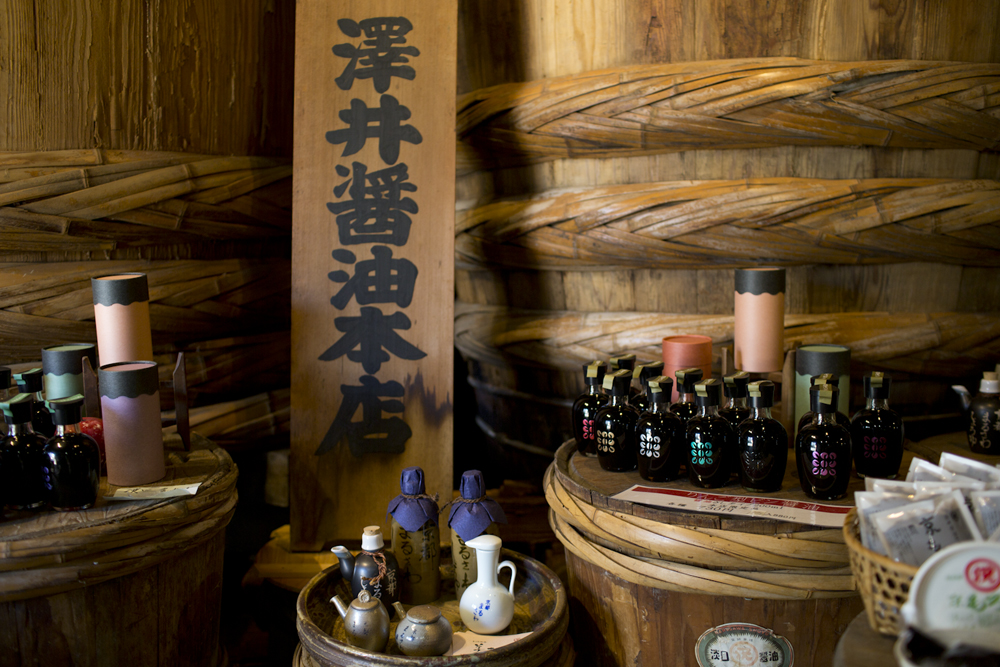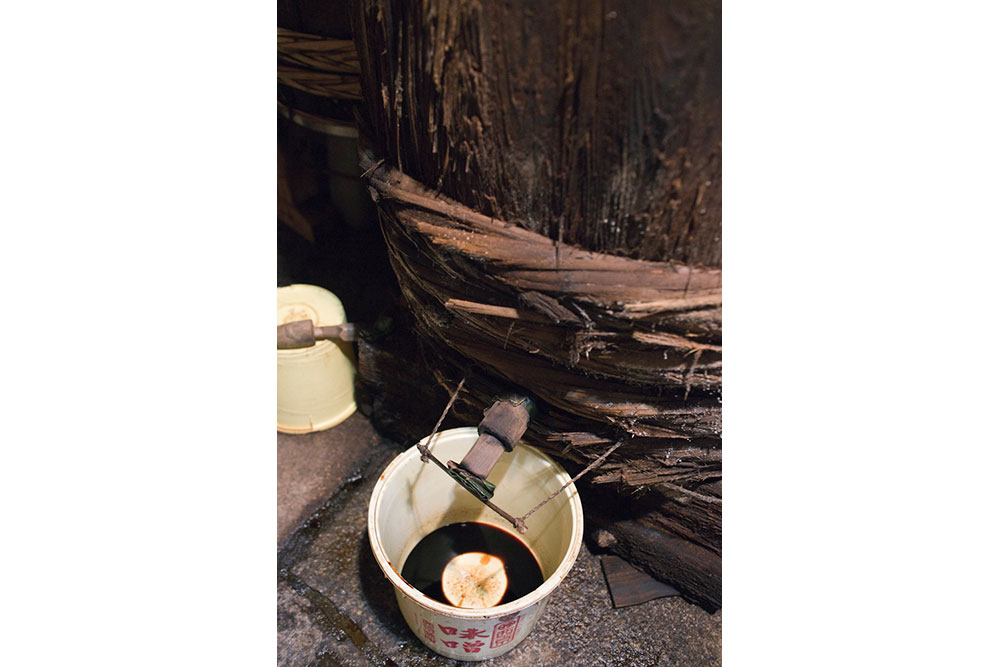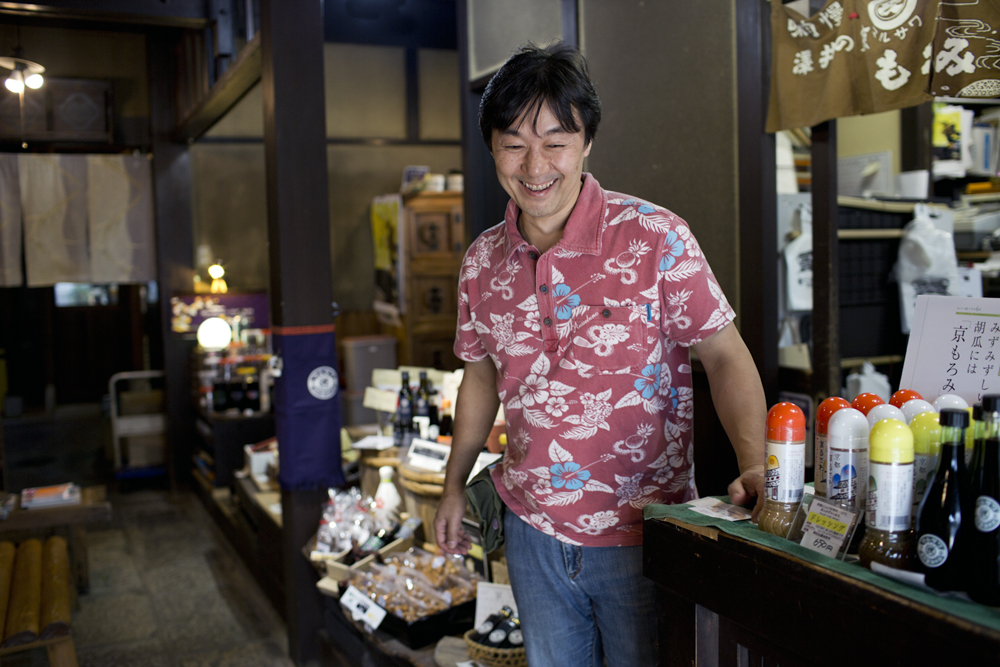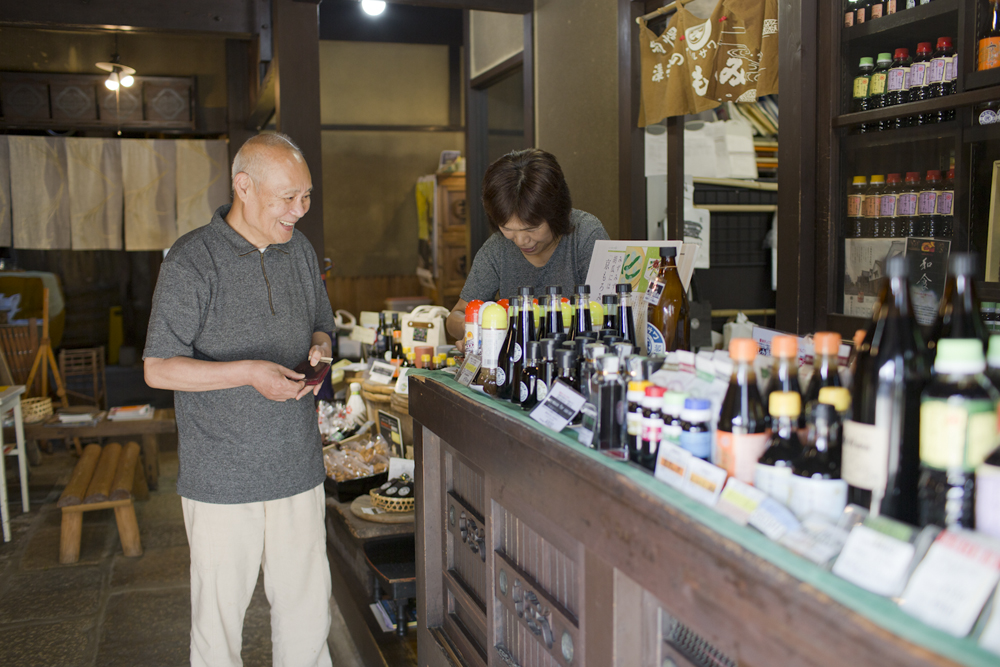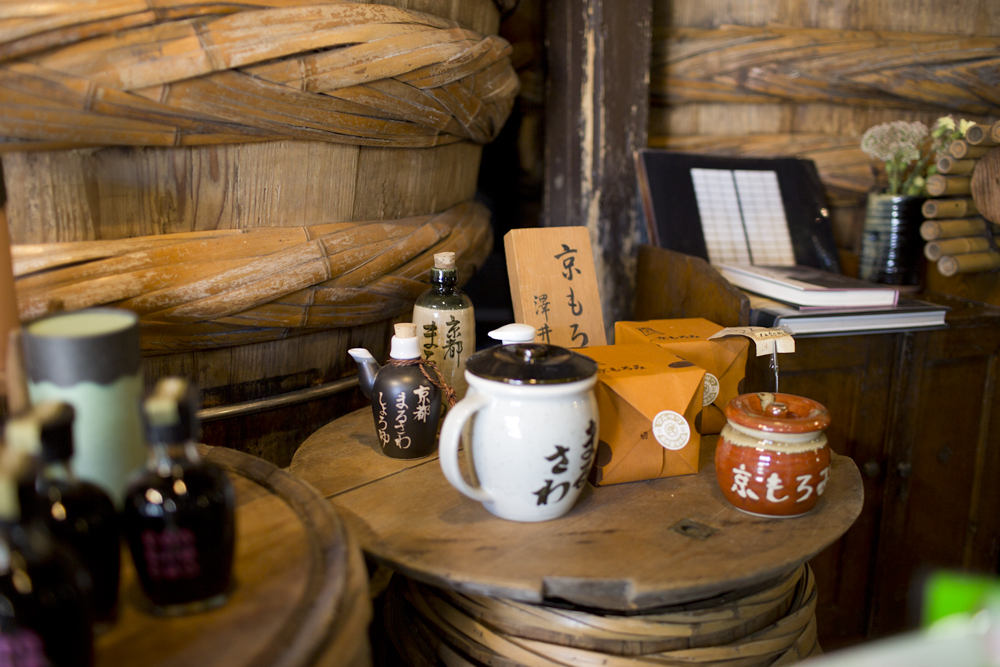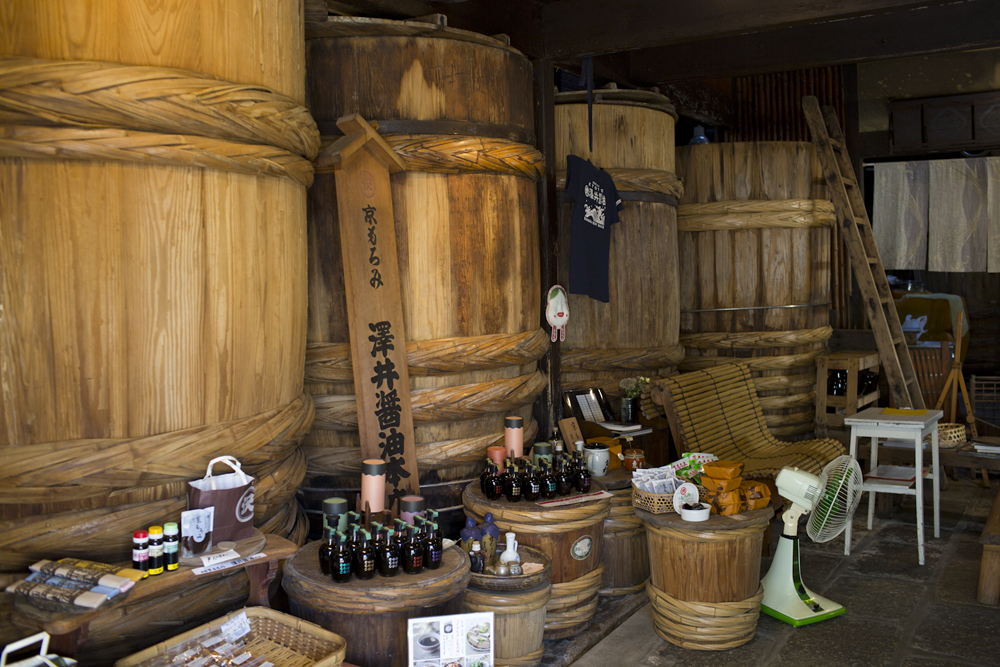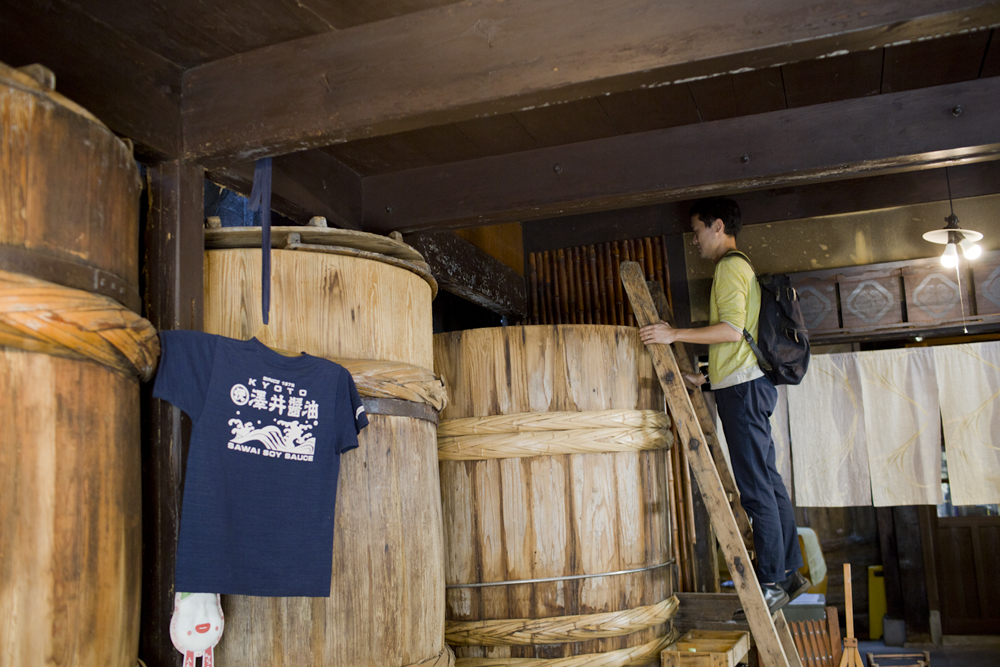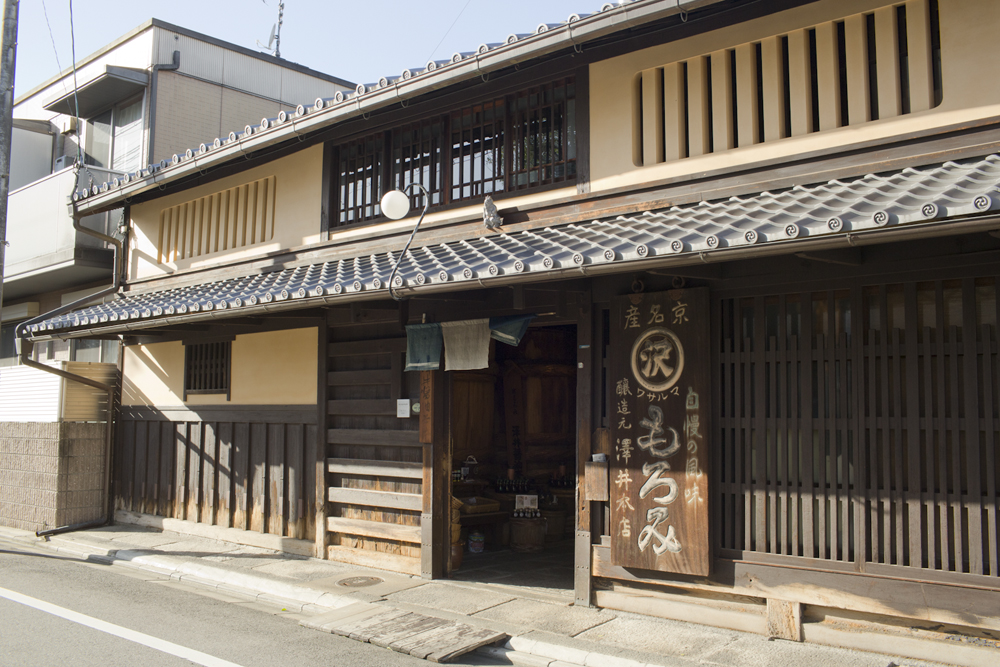Sawai Shoyu – Some Very Old Soy Sauce
On a small side street in Kyoto, we found the most important soy sauce factory and shop in the region – Sawai Shoyu. The 400 year old factory is dark and mysterious, with locals popping in and out to refill large ceramic jugs of their favorite brew. If you are nosy, you can catch a glimpse of the the back room, where mammoth wooden vats, 15′ tall, line the industrial space, encrusted in residual salt and filled with fermenting mashed-up soy beans.
The array of soy products is astounding, some of them having fermenting for up to 4 years! To make the basic soy sauce, soy beans are boiled with wood fire, put in these wood bins, and then stirred every day for two years (tough to go on vacation with a schedule like that). When the time comes, they squeeze the soybeans and then strain the world class soy sauce into tiny bottles. Then, the mash is bottled up with some eggplants and ginger to make a paste called moromi. This is intensely favored black paste is most often tossed with cucumbers and eaten at the bar alongside cold beer, a Japanese staple.
Those of you who have had bottle of soy sauce lurking on your condiment shelf for years, be warned – the good stuff must be refrigerated, but even then, it should be eaten within a month.

